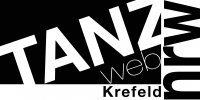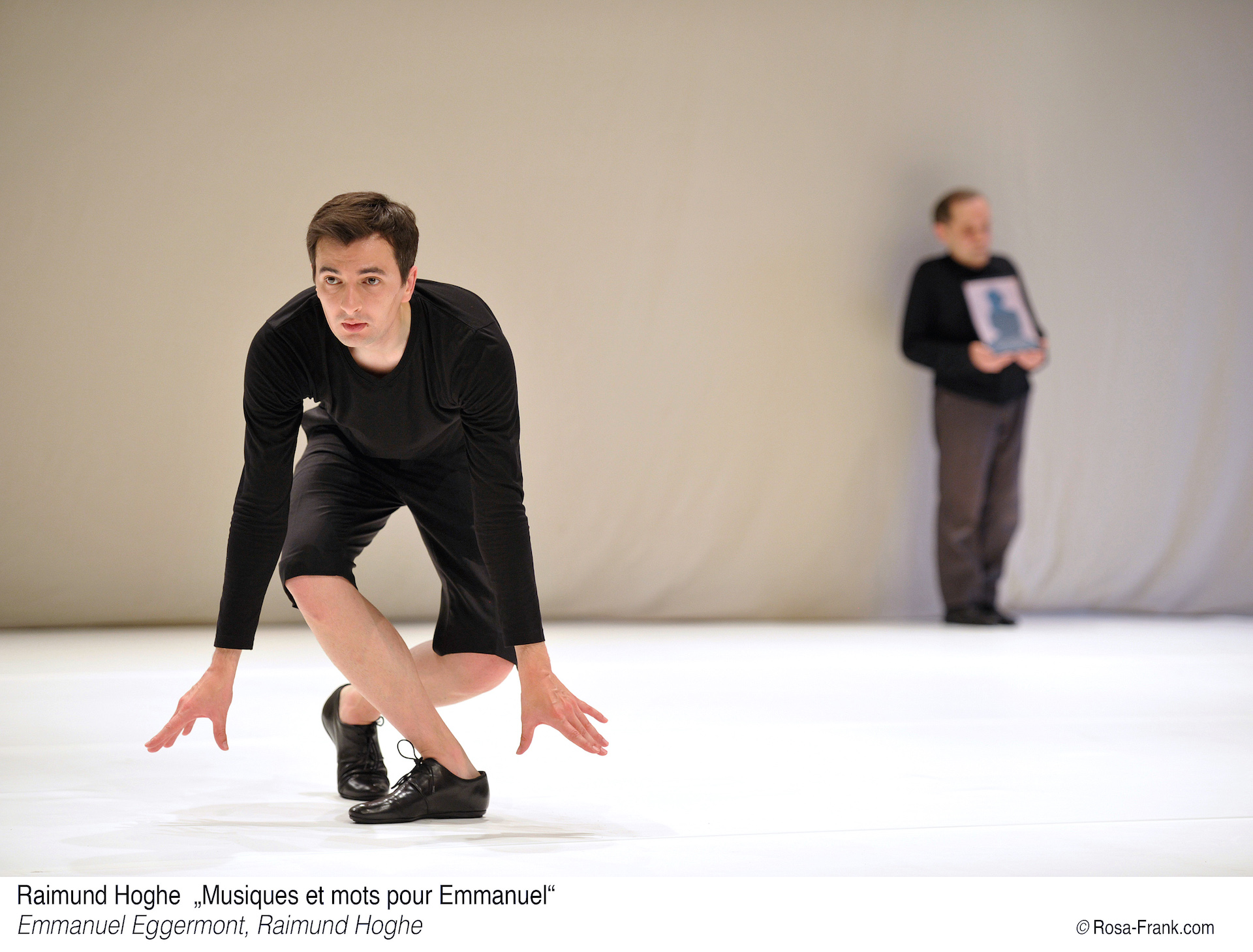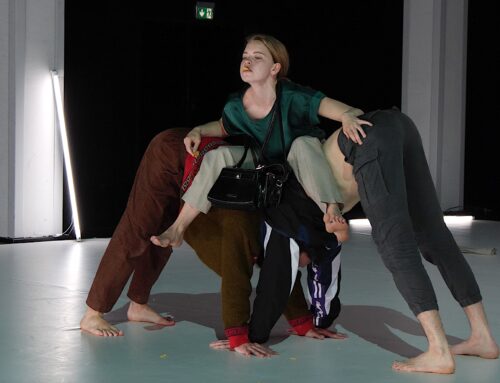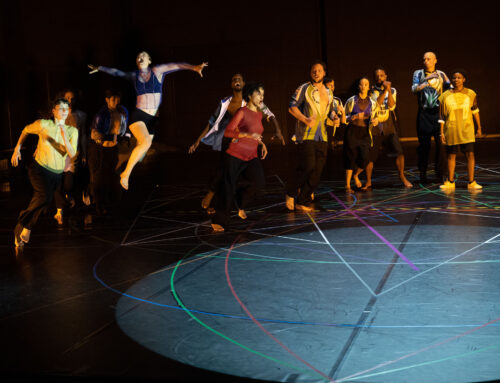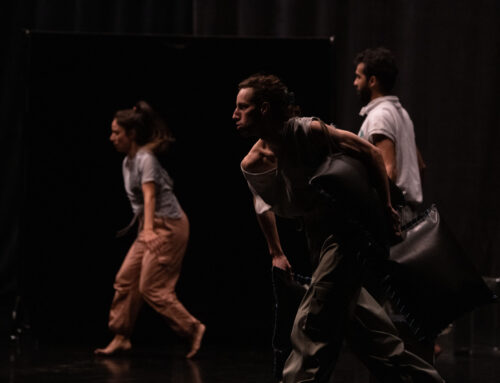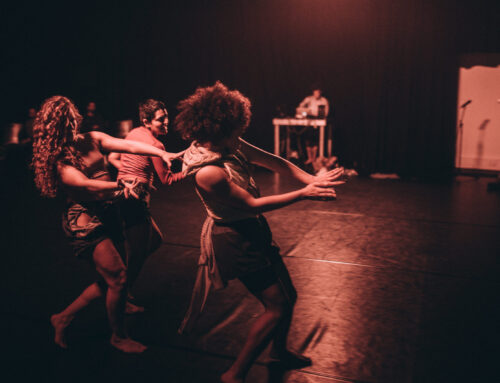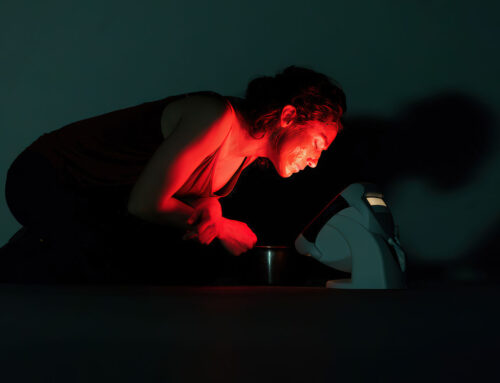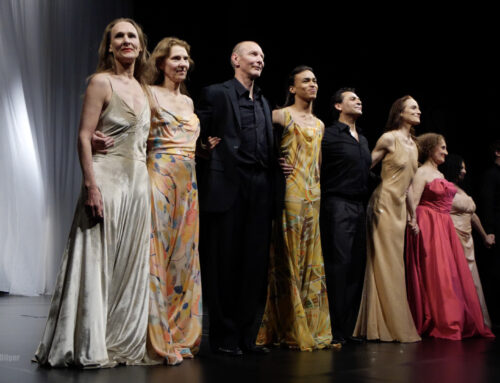„Musiques et Mots pour Emmanuel“ at Festival „Move!“ in Krefeld
nightreview by Bettina Trouwborst
translated by Veronica Posth
With Raimund Hoghe, the festival ‚Move!‘ 16th Krefeld Days for Modern Dance, hosts a prominent choreographer of the free scene. Hoghe lives in Düsseldorf and Paris. In France the melancholic master of danced minimalism has been celebrated as a star for decades. Since he received the top promotion of the country in NRW – five years ago – the 1.54 meter small dance artist, author, filmmaker and former dramaturge of Pina Bausch and his works are delightedly shown. At the Heeder Factory, he shows „Musiques et Mots pour Emmanuel“, a tribute to the French dancer Emmanuel Eggermont on the occasion of their ten-year collaboration. The dance piece, premiered in the Pumpenhaus Münster in 2016, is presented like a bow to the stage art itself. It would not come from Raimund Hoghe’s pen though, if it would not contain societal political allusions here and there.
The grandstand at the Heeder Factory was significantly busier during his piece compare to other dance performances and whoever was sitting there, watched the white stage for 75 minutes, where a subtle dancer with a wonderfully diaphanous body, interpreted his own present for music and texts from different eras. It is a concentrate of meditative calm and dance poetry, and as such, an equal gift for the audience. Formal and yet unconventional – an outstanding evening in his choreographic originality.
The architecture of the former wallpaper factory with its circulating galleries and the cornerstones defining the scene, finds itself in opposition to Raimund Hoghe. Right at the beginning he hurriedly walks around the stage. In his hand he holds a miniature canoe. Later he reads a letter from two African boys, 14 and 15 years old. They ask the European people in power to help the children and young people in their country. The artist adds, with the congenital spinal curvature, that the two are died on the flight as blind passengers in the engine of an airplane. Hoghe wrote this letter in „Lettere amorose“ in 1999.
The fate of refugees has left no one indifferent as him.
Luca Giacomo Schulte, a visual artist and a longtime collaborator, continues to step down the stage. When Hoghe and he appear, it looks like as if Emmanuel Eggermont, fully internalised, should assure an outside world or as people should be called in the (song) lyrics. The dancer expresses himself mainly with the arms and hands. He does not spin elegant pirouettes, does not jump x-fold entre-chats or circles his dance floor in grand-jetés. With crystal clear lines, he decimates a vocabulary to which he has inspired his choreographers. The typical Faun pose from the Nijinsky solo „L’Après-Midi“, which Hoghe in 2008 created for him and with which the two traveled around the world, is a recurring motif. With crossed forward and backward steps, kinked hands and arms, flowing arm swings,he poses with bowed back or crouches with unfolded elbows. The noble dancer leans his head surrendered to baroque court music produced to an original recording by the actor Oskar Werner, who recalls Max Reinhardt’s „speech about the actor“ where he poses posh, devout, stilted, thoughtful or humble.
„Musiques et Mots pour Emmanuel“ is an evening of great seriousness. Hoghe celebrates the art of the honoured and his bravura of the Petitesse but he also exposes the optical flawlessness of this handsome dancer and his (almost) naked body looking at it from the back too. And, as he always liked to do, he contrasts it with his own corporeality, which he calls a „landscape“. This homage is characterized by dignity so much as by courtesy. A beautiful moment is when Raimund Hoghe is in the background and carefully takes off the worn clothes of Eggermont summing it up like a father that would steal into the room of his sleeping child.
There is a single moment that makes you smile. An English-speaking singer does not really succeed in pronouncing Jacques Brels Chanson „Ne me quitte pas“ correctly. With this extremely touching interpretation Eggermont always gets out of balance. Then, with shaped arms as if to embrace they move around each other smoothly: as if his beloved person has been lost. His face remains emotionless like all the time. And here appears the great art of Raimund Hoghe: to awaken the great feelings with the little things.
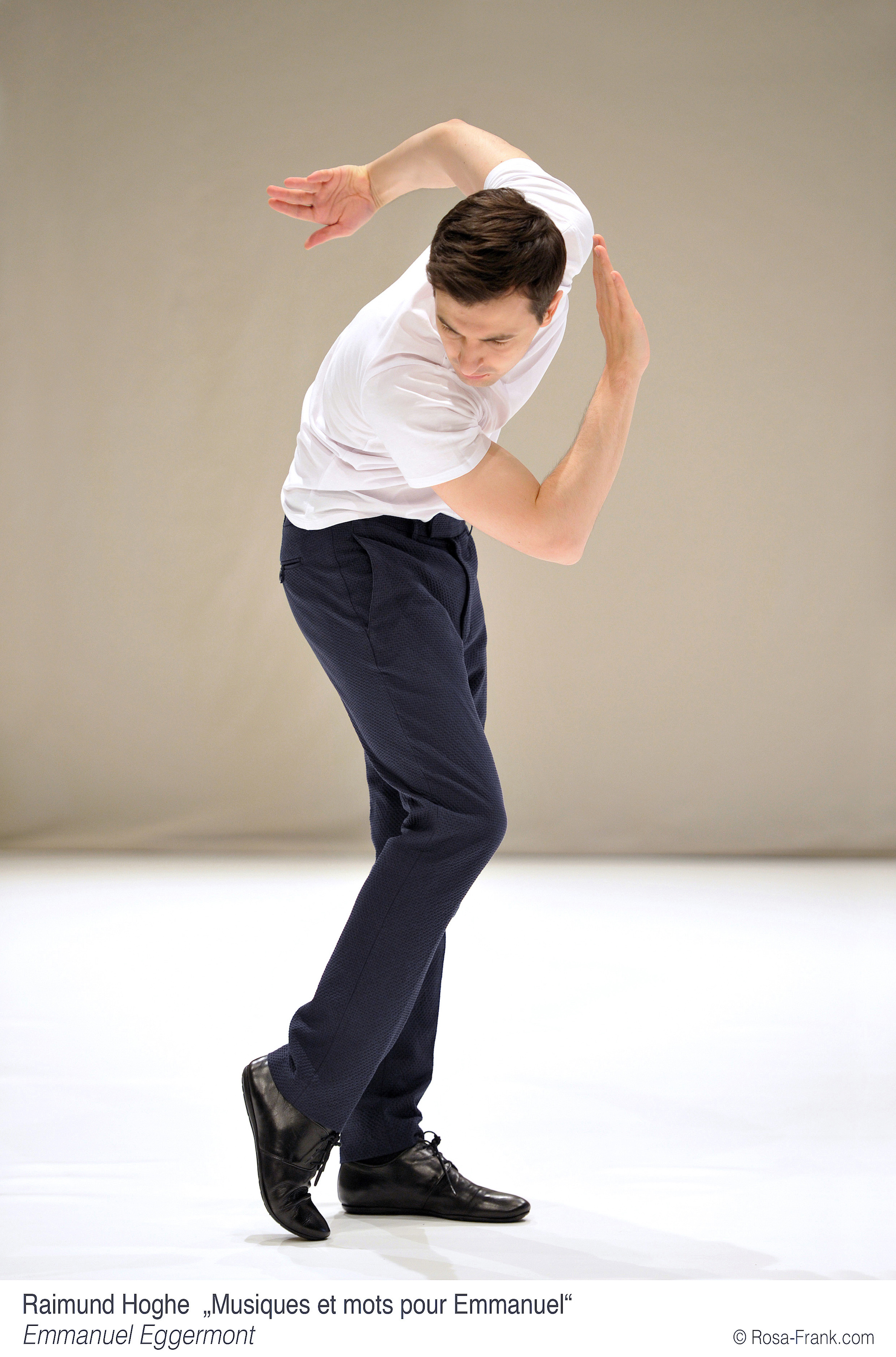
„Musiques et mots pour Emmanuel“; Konzept, Choreografie & Ausstattung Raimund Hoghe; Künstlerische Mitarbeit Luca Giacomo Schulte; Tanz Emmanuel Eggermont; Licht Raimund Hoghe, Johannes Sundrup; Management Les Indépendances (Paris); Foto Rosa Frank; ProduktionRaimund Hoghe – Hoghe & Schulte GbR (Düsseldorf); Koproduktion Theater im Pumpenhaus
